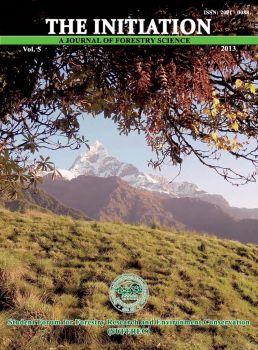Gaurishankar Conservation Area - A Prime Habitat for Red Panda (Ailurus fulgens) in Central Nepal
DOI:
https://doi.org/10.3126/init.v5i0.10252Keywords:
Distribution, Fecal pellets, Gaurishankar Conservaton Area, Red Panda, TransectAbstract
Globally threatened Red Panda is found in isolated high mountain’s bamboo- forest patches in Nepal, India, Bhutan, China and Burma. This study was focused in Gaurishankar Conservation Area, one of the newly declared protected areas of Nepal, with aim to glean baseline information regarding existence of Red Panda, its habitat status and conservation issues. Methods like altitudinal line intercept, key informant survey and consultation (with local people, herders, conservation stakeholder) were used to address the objectives. Marbu, Kalinchok, Gaurishankar (Dolkha District), Chuchure, Gumdel (Ramechhap District) and Fulpingkatti (Sindupalchok District) area were surveyed in first phase of study and presence of Red Panda distribution was recorded from Marbu, Kalinchok, Chuchure and Fulpingkatti forests areas through sign evidence (fecal pellets). A total of 24 transects were established randomly in the whole area and only 16 transects were worked effectively because of topographical barrier. Distribution of Red Panda was found as clumped pattern ( ). Among these sites, frequent sign encounter was recorded in Marbu (5.45/km) area followed by Fulpingkatti (5.06/km), Kalinchok (3.73/km) and Chuchre (1.67/km). Like in other areas, conservation issues like habitat destruction, livestock pressure, fire wood collection and illegal poaching were rampant in Gaurishankar also. This study recommended for detail survey on population status and conservation activities should be elaborated in current identified habitat as well as further survey should be focused on other possible habitats within conservation area.
DOI: http://dx.doi.org/10.3126/init.v5i0.10252
The Initiation 2013 Vol.5; 43-49

